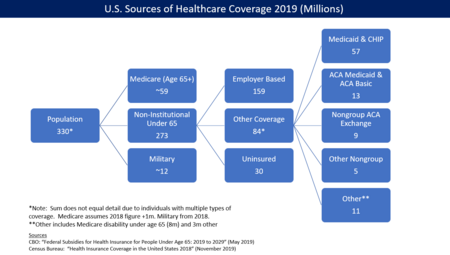The 6-Second Trick For About the Affordable Care Act - Official Website


If the Supreme Court Ends Obamacare, Here's What It Would Mean - The New York Times
The Best Guide To Plan to Protect and Build on Obamacare - Joe Biden for
Since January 2014, nongrandfathered, totally insured strategies in the private and small group markets and those in the exchanges were needed to offer EHB protection in 10 different classifications that show the scope of benefits covered by a typical company plan. The ACA, as modified, defines a little employer for this function as an employer having at least one but no more than 50 or 100 workers (states have the discretion to broaden their little group markets to consist of employers with 51 to 100 employees).
Self-insured small group plans, along with all large group plans and all grandfathered plans, are not required to use important health advantages. Again, this requirement uses only to completely insured small group strategies and to plans offered in the specific market, on or off the public ACA Marketplace exchange.

Health Care Coverage Under the Affordable Care Act — A Progress Report - Commonwealth Fund
---------------------------------- Grandfathered Plans Grandfathered group health strategies are those with the same major provisions because March 23, 2010, the date of the ACA's enactment, whether totally insured or self-funded, and despite size. Grandfathered strategies are exempted from many changes required under the Affordable Care Act. Group plans or private policies may lose their grandfathered status if they ensure considerable modifications that reduce advantages or increase costs to consumers.

Obamacare sign-ups surge in Michigan, uninsured rate at 5.3%
The 15-Second Trick For Affordable Care Act - HFS - Illinois.gov

Department of Labor or the U.S. Department of Health and Person Solutions with questions. For employees in a group health strategy, the date they join is not what matters; instead, it's the date the strategy was developed. This Author and new family members might be contributed to grandfathered group strategies after March 23, 2010.
As specialist Gary Kushner of Kushner & Co. describes these three periods, an employer will measure hours in one plan year (Measurement Period), compute the hours (Administrative Period) to identify full-time eligibility throughout open registration, and after that provide coverage throughout the next plan year (Stability Duration). New employees who work variable hours are likewise based on a Measurement Duration, Administrative Duration, and Stability Duration, but the preliminary durations are based upon their date of hire prior to transitioning to the standard durations.
